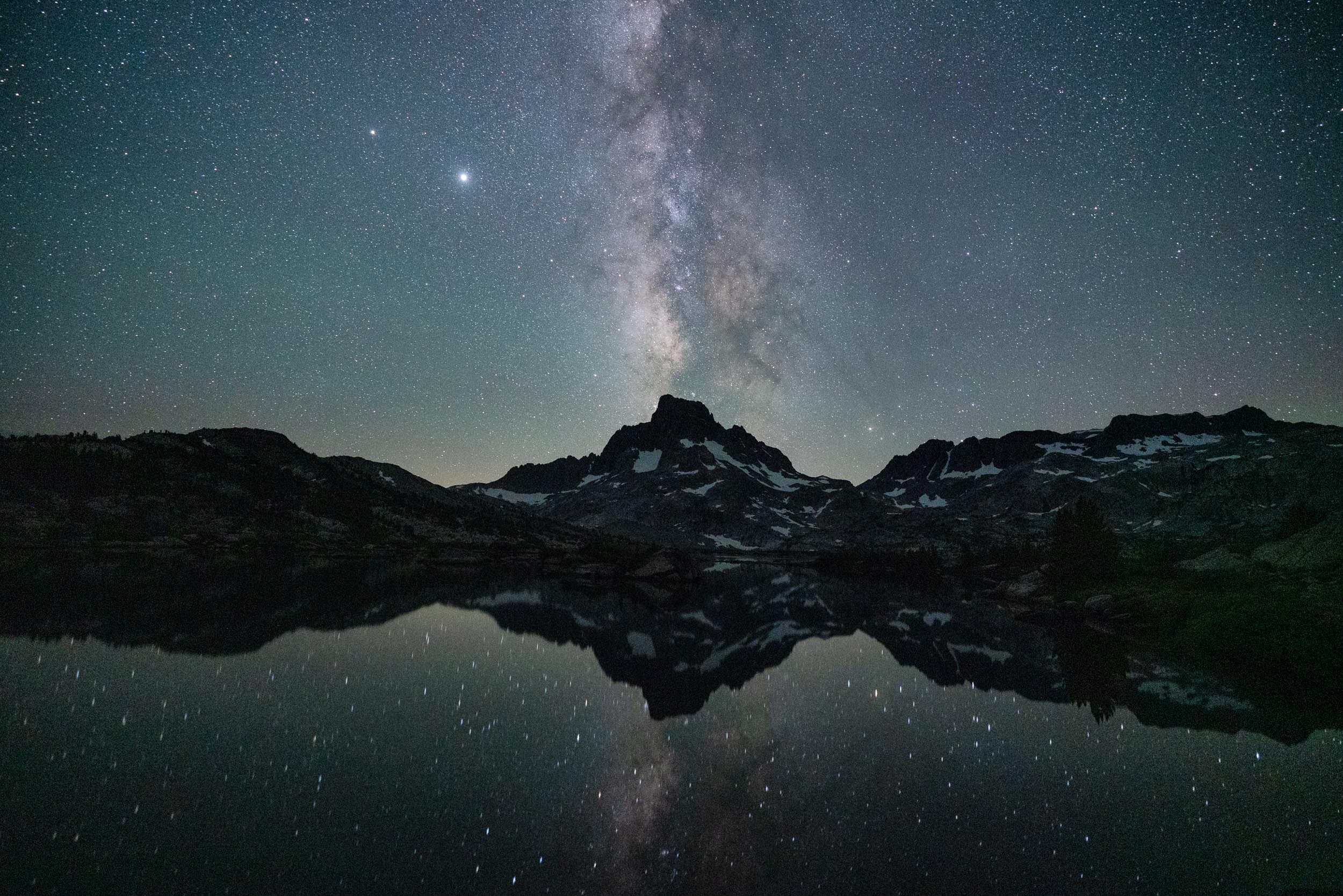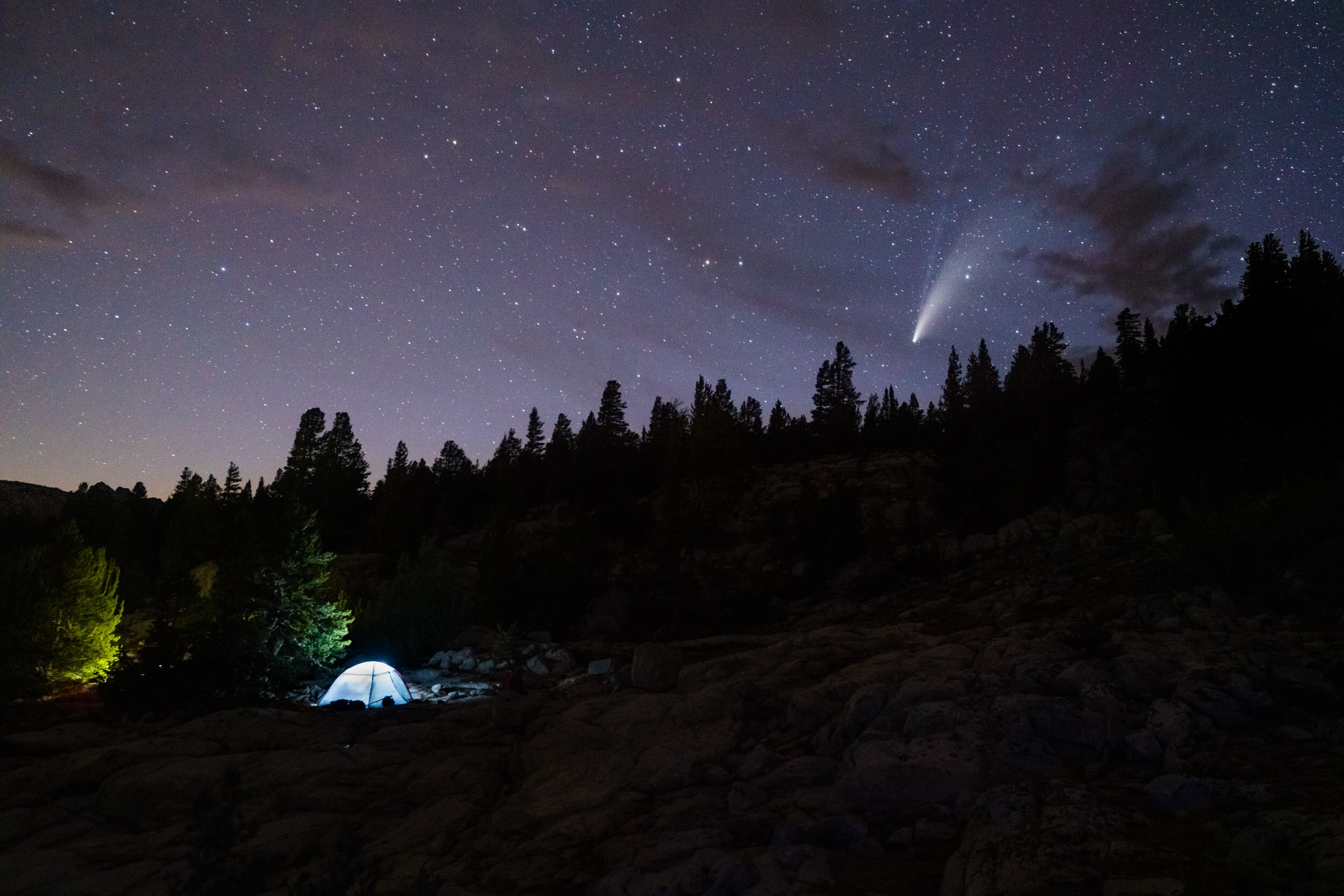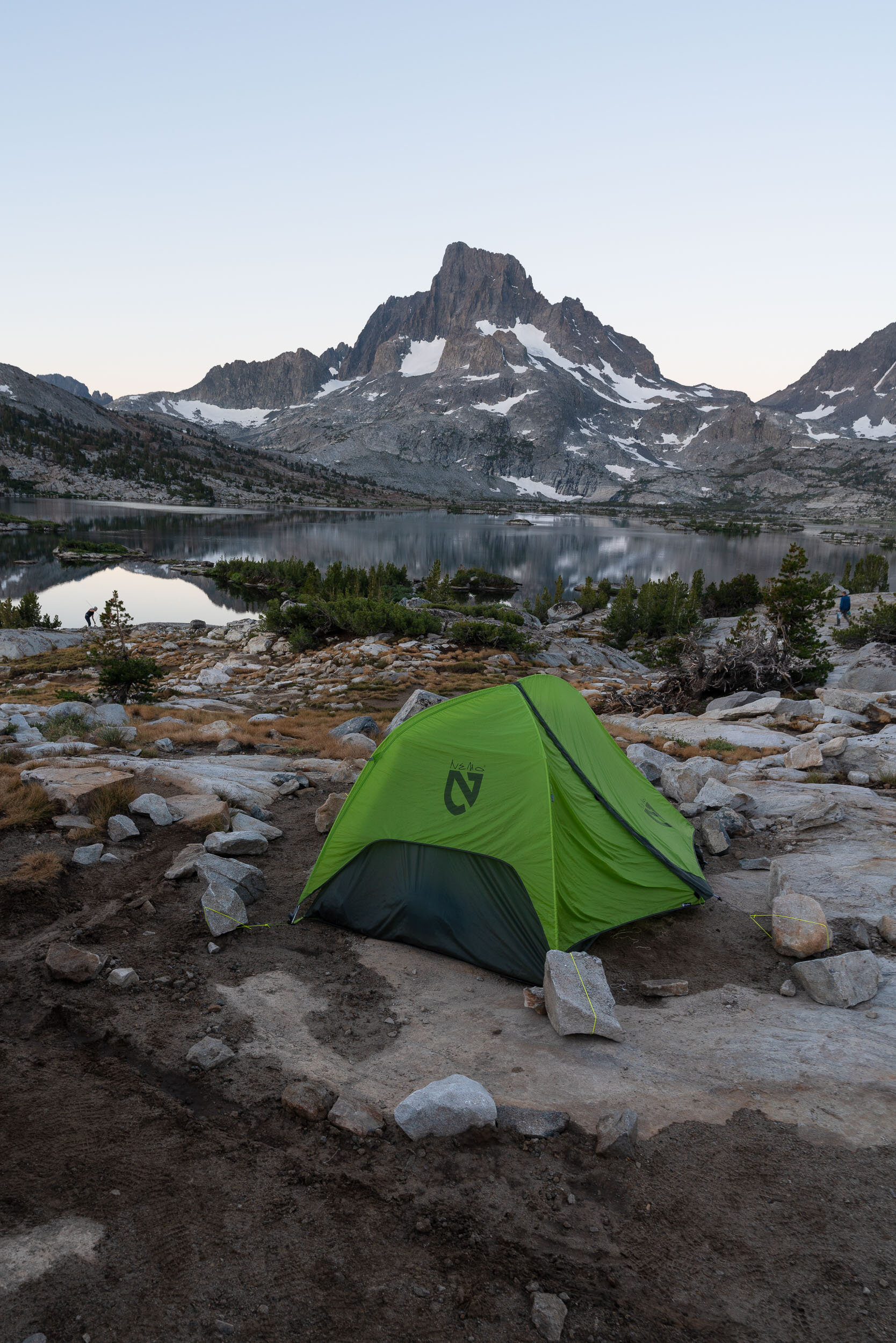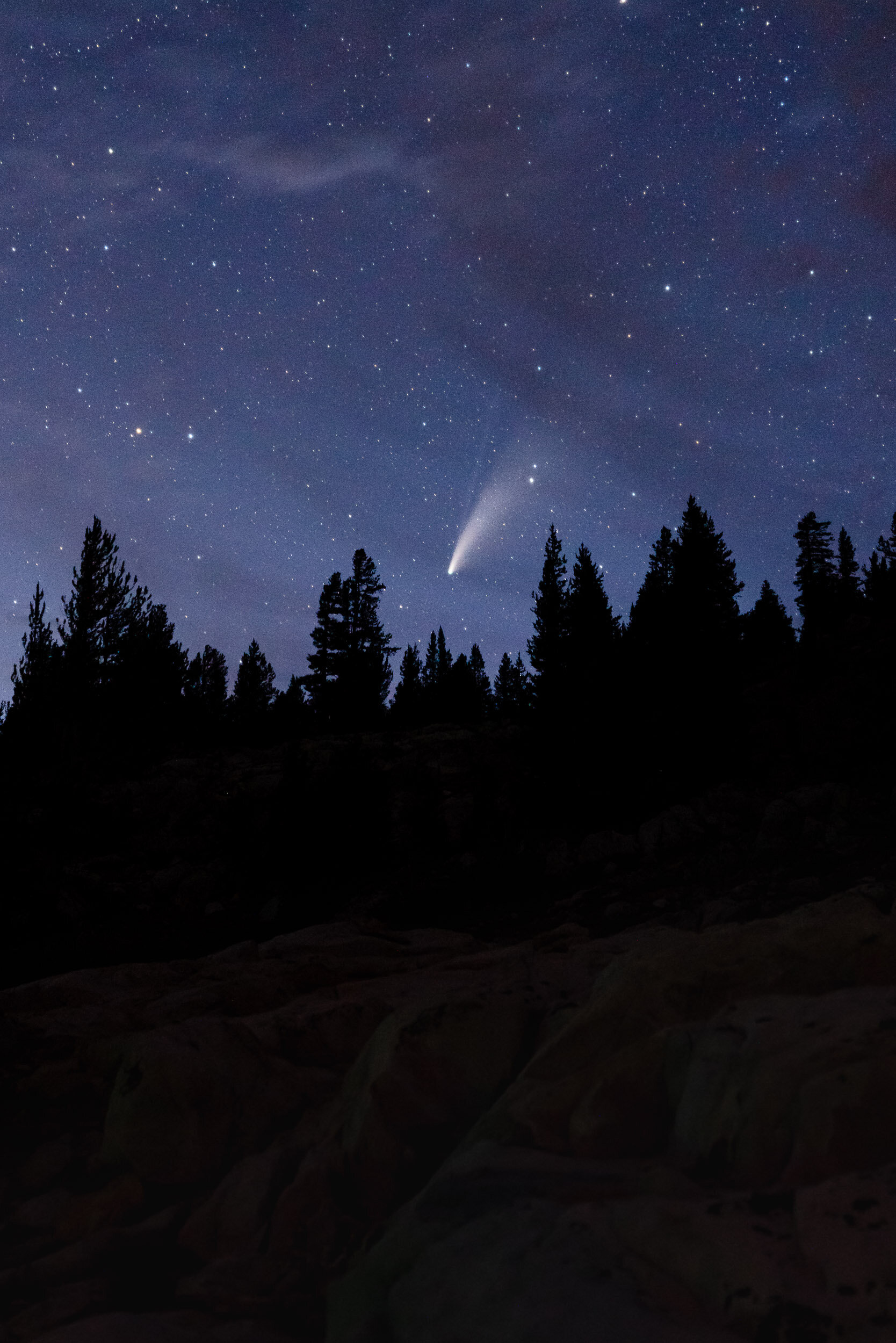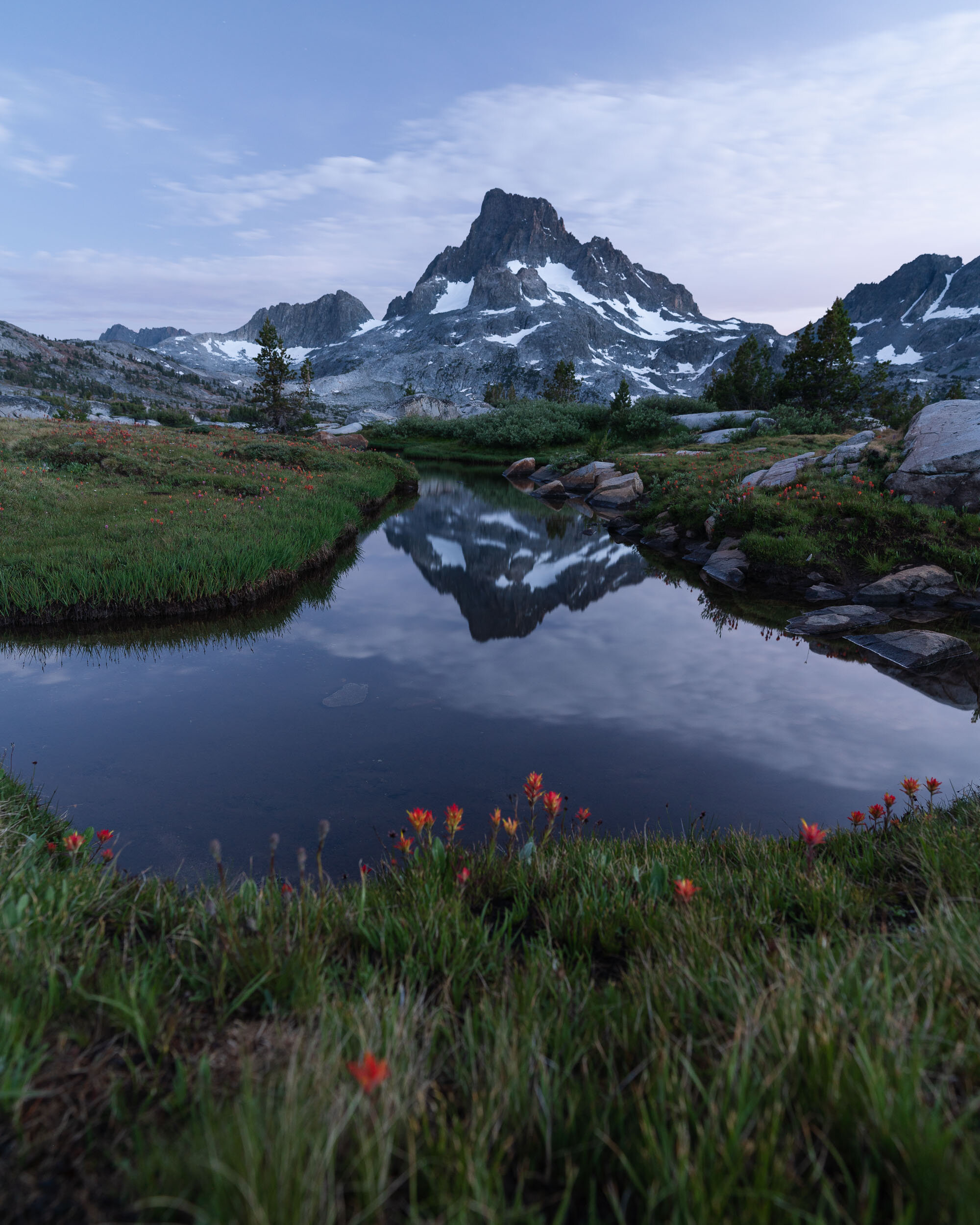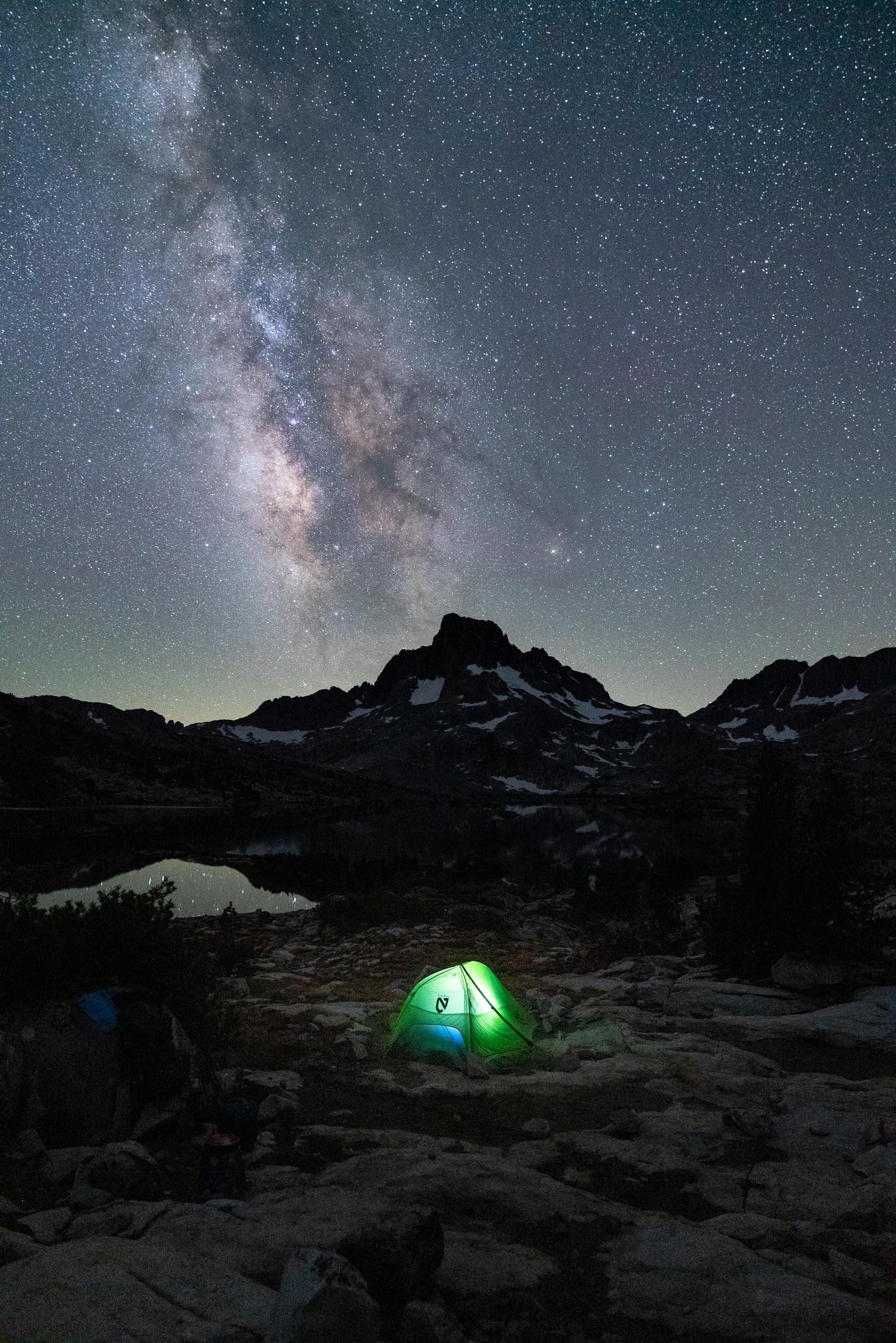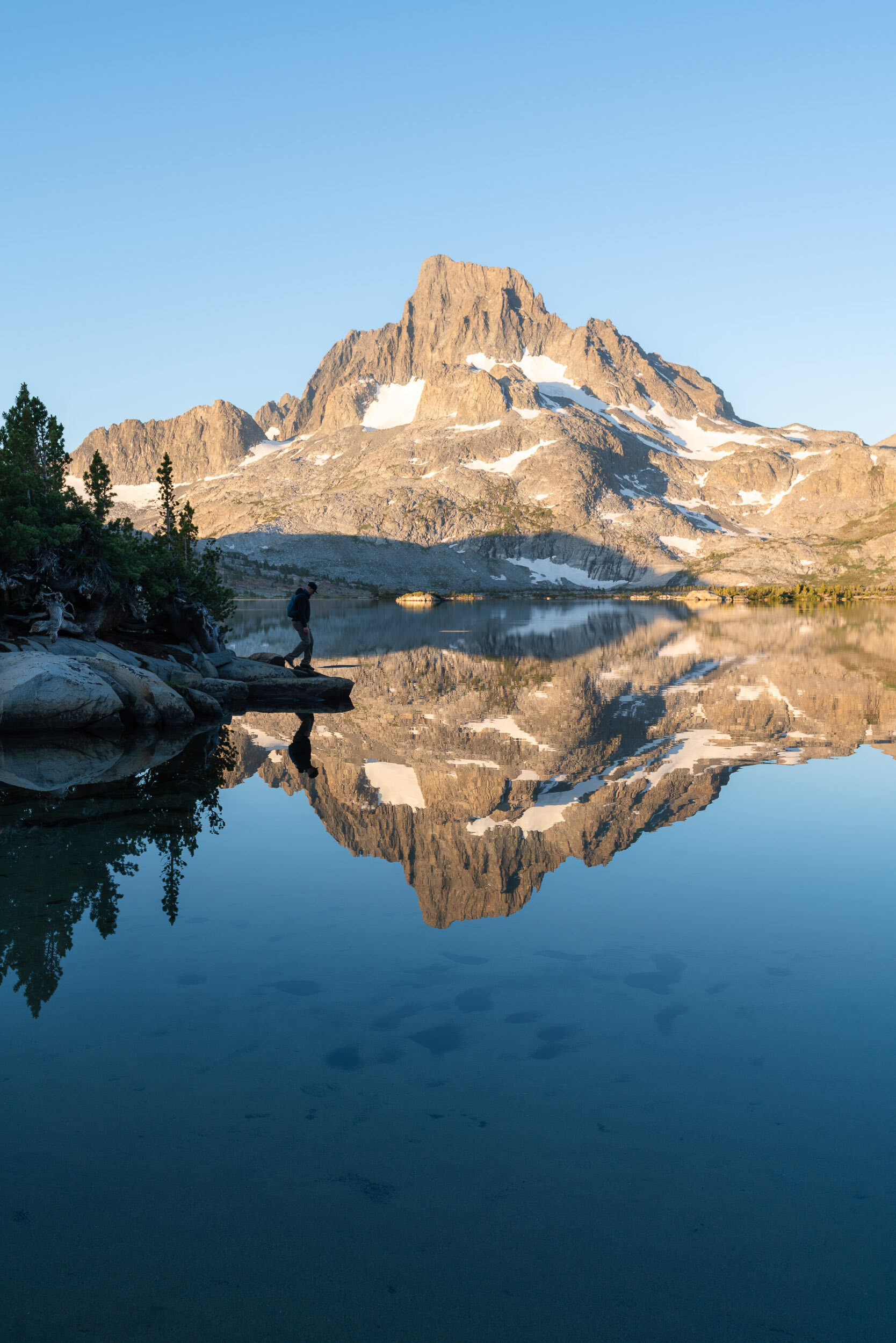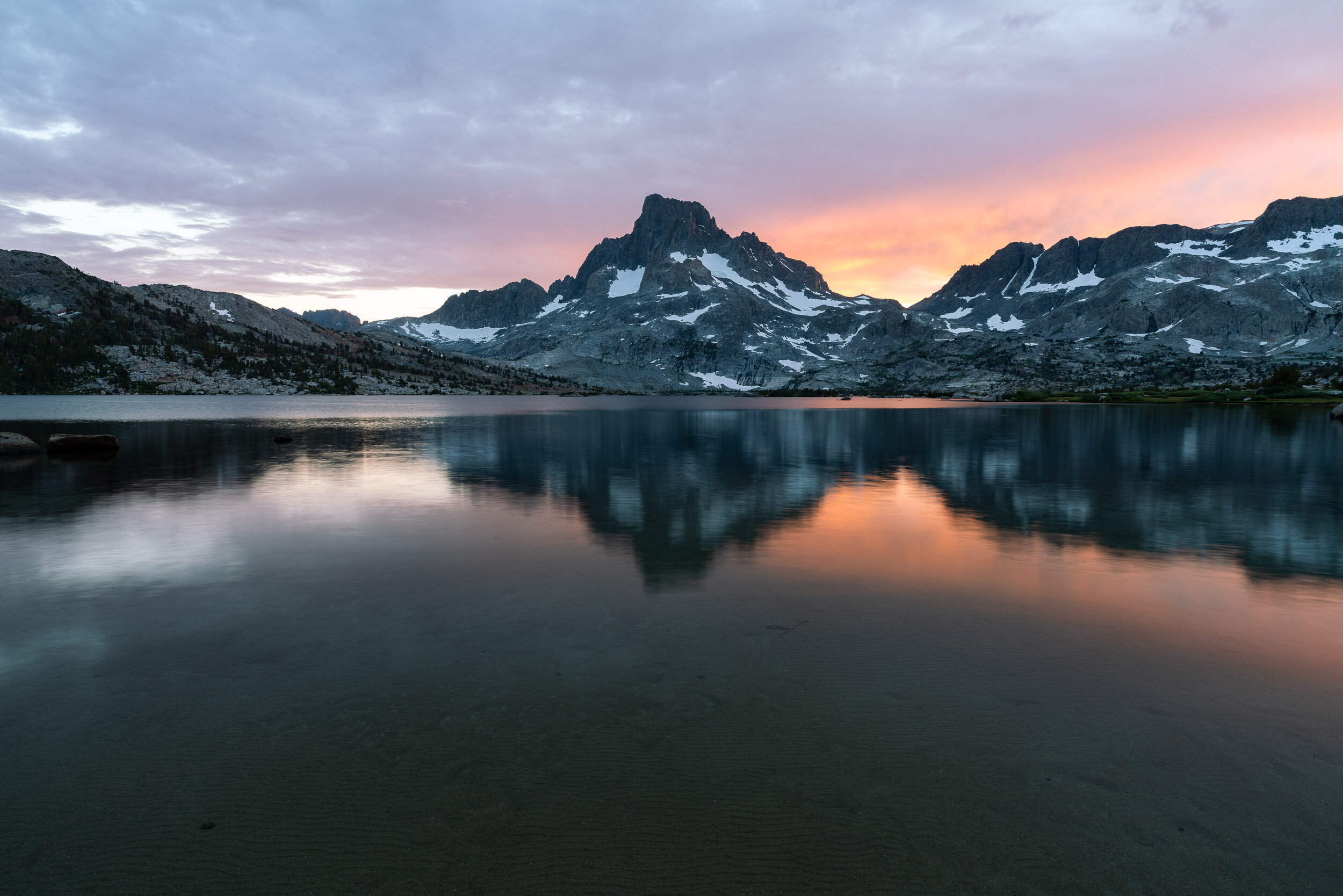Backpacking Thousand Island Lake - Ansel Adams Wilderness
Let’s explore this backpacking route to Thousand Island Lake, a must-see in the Eastern Sierra. The lake is named after the many rock islands that can be seen dotting the surface of the huge alpine lake. And let me emphasize that it is HUGE. I’ve been meaning to go for years and made it happen this summer. If you’re into backpacking or photography, I’d move this one up on your list - it’s a breathtaking place to spend a weekend.
There’s a few different ways to get there but I went via the High Trail in the Ansel Adams Wilderness. Sitting about 8.5 miles from the trailhead, this makes a great single-night stay, or you can loop it in as a stop along a multi-day trip from the Mammoth Lakes area or Yosemite National Park. You’ll likely see many JMT-ers camping and passing through since this is a perfect stopping point after summiting Donohue Pass heading south.
I went there with a couple friends for a single-night photography-focused trip. Thousand Island Lake has limited light pollution, making it a great place to escape. This also makes it an ideal spot to see (and photograph) the Milky Way. As luck would have it, our trip fell during the time that the NEOWISE comet would be visible. You’ll see the comet trailing in some of the pictures here. One of my favorite backcountry experiences, such a great setting to watch it. The early morning views did not disappoint either. At sunrise, the lake was so still it looked like glass. Making for the beautiful, serene reflections that you see in these images.
We stayed one night at Thousand Island Lake, before heading toward Garnet Lake via the John Muir Trail. If you take this same route, you can look forward to seeing Emerald Lake and Ruby Lake along the way as you hike out. After Ruby, there are several switchbacks and some elevation gain. Once you reach the top, count on clear views of Banner Peak and Garnet Lake from over 10,000 ft.
From Garnet Lake we took the Garnet-River Cutoff Trail which would eventually connect us with the River Trail and take us back to the Shadow Creek / River Trail trailhead where we started. This section was much less scenic and involved a river crossing, which I’ll go into the details about in the section below. If you visit during this same time of year, keep this info in mind!
HERE’S WHAT TO KNOW BEFORE YOU GO
Overnight camping is not permitted within 100 ft of lakes, streams, and trails - so keep this in mind when choosing a spot when you get out to Thousand Island Lake. There’s plenty of leave-no-trace approved spots to choose from
Camping is also banned within a ¼ mile from the outlet of Thousand Island Lake
A wilderness permit is required to backpack in this area - visit the recreation.gov site for most up-to-date details and see if you can make a reservation in advance
A shuttle may be required - however in the days of COVID-19, the shuttle is not running. You’ll want to check with Devils Postpile National Monument website here for the most current shuttle/parking status.
Limited parking can be found around the trailhead in three different parking lots and few spots along the Agnew Meadows driveway - as with all busy backpacking trails if you can get there early and snag a spot, do it!
Be prepared for thunderstorms and wet weather - it’s worth it to pack a lightweight rain jacket and definitely a rain fly for your pack. Keep both accessible so they’re easy to pull out if it starts raining on you mid-hike (mine were buried in the middle of my pack the day I got drenched hiking out!)
WHAT TO EXPECT WHEN NAVIGATING THE RIVER TRAIL
You know I always recommend downloading a trail map on one or both of these apps - AllTrails and GaiaGPS before you head out. And - if it’s an option - chatting with a ranger or reading some recent-dated comments on AllTrails for any info on current trail conditions. Even so, sometimes things change before your trip.
On the River Trail we ran into a section of river where there wasn’t an obvious place to cross. And the AllTrails and GaiaGPS maps didn’t clearly show it either. After some mild scrambling and lots of elevation lost we reached the Middle Fork of the San Joaquin River. We walked up the river from where the trail meets the river and found a shallow crossing.
Whatever you do, don’t follow the narrow foot trail that goes right (or southeast) down the river. It leads nowhere and your prospect of crossing the river gets sketchier the further down you go. Depending on the time of year, this crossing could prove to be dangerous, so make sure you do your research before you try. Maybe pack some lightweight sandals just in case it’s a bit too deep to avoid hiking for miles in wet boots.
When I was making my permit reservation, I had a choice to either go to Thousand Island Lake via the River Trail or the High Trail - after hiking both I much prefer the High Trail. The rest of the River Trail after the river crossing is pretty unremarkable. Keep in mind this trail is super buggy. Tons of mosquitos since it follows the river. Bug spray is highly recommended. I got bit even with bug spray on.
After losing lots of elevation, you’ll see a sign that shows you the way to Shadow Creek which will take you to Ediza and Iceberg Lake which I’ve written about here. This is a good place to take a break because soon you’ll need to push through some more elevation gain until you reach Agnew Meadows and exit the Shadow Creek/River Trailhead.
MORE VIEWS FROM THOUSAND ISLAND LAKE + THE RIVER TRAIL
Here’s some more shots from that trip to help you decide if you wanna backpack out to Thousand Island Lake. Highly recommend seeing this picturesque place! Be sure to pin and save this post to your travel board as a resource for later.
Btw, if you’ve got any questions about this trip or trail specifics - leave them in the comments below & I’ll get back to you. I’m an open book when it comes to sharing info with fellow hikers, backpackers, and photographers.





